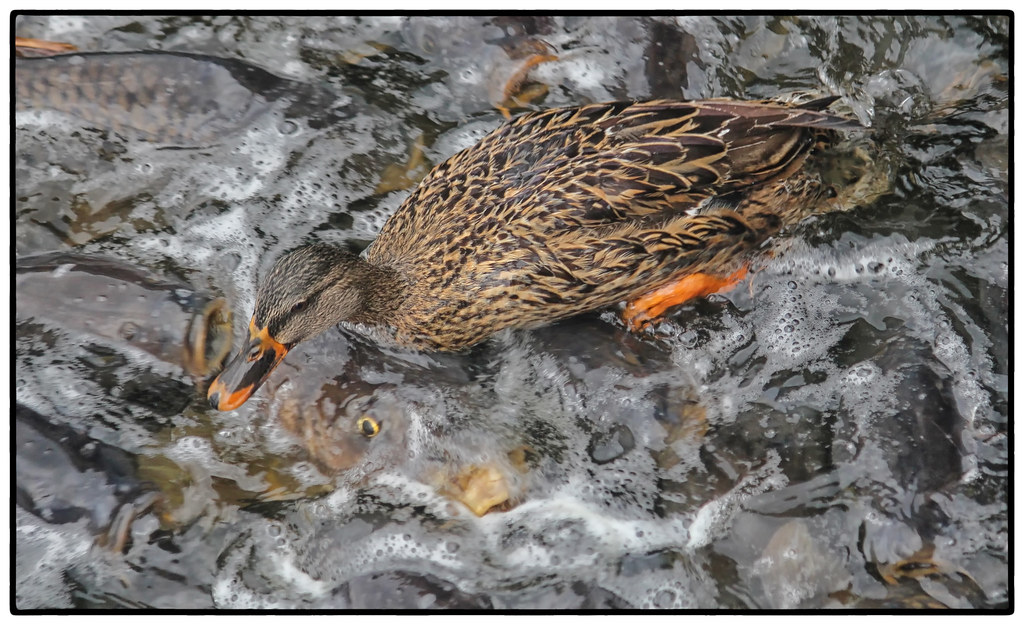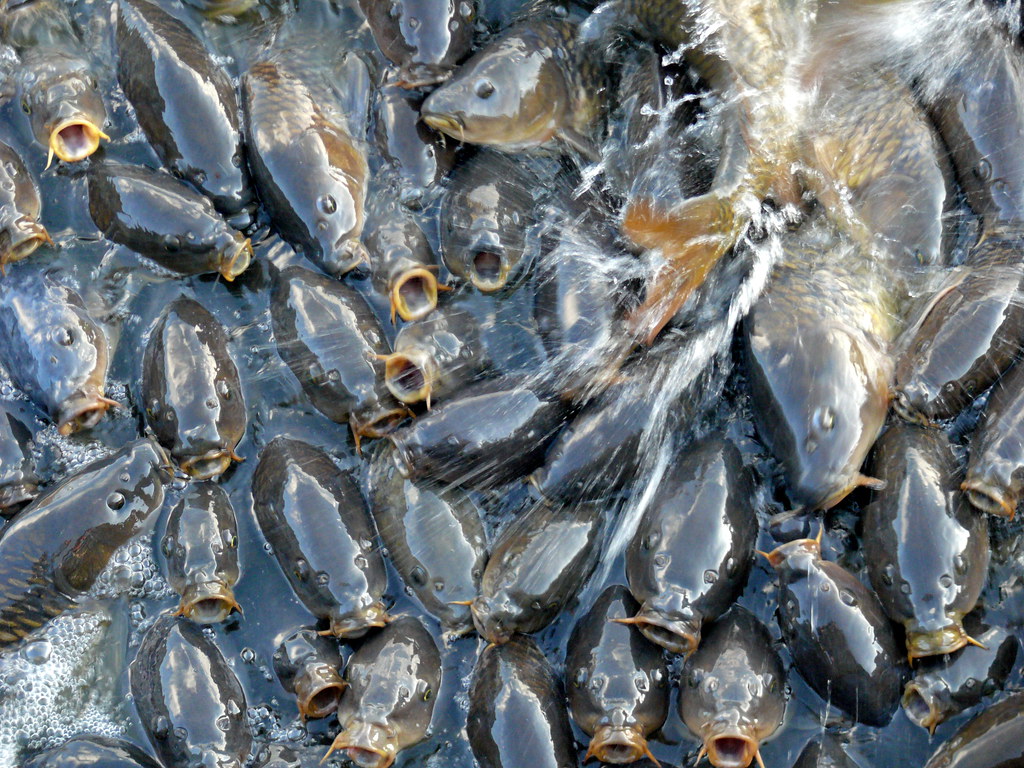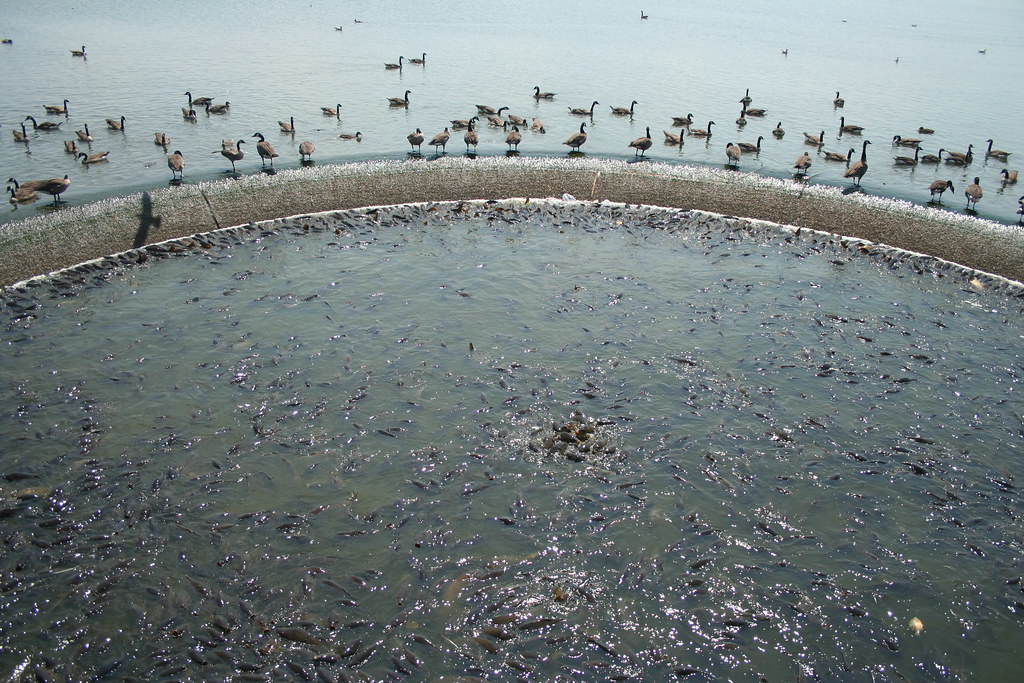The Pymatuning Reservoir in Crawford County, in the US state of Pennsylvania, was once a very large swamp. The Shenango River flowed through this ancient swamp and provided sustenance to industries located downstream in the Beaver and Shenango valleys. But when a devastating flood hit the valleys in 1913, the need to tame the river was felt.
In 1934, a dam and a reservoir was built to conserve waters entering the swamp and to regulate the flow of water in the Shenango and Beaver rivers. A concrete spillway bowl was also built to allow independent regulation of the upper reservoir. The flow of water over the bowl brings a constant supply of natural food into the area, including plant material, insect larvae, crayfish and other invertebrates, drawing a large number of fish to this structure. As soon as this phenomenon was discovered, the Linesville spillway became an impromptu tourists attraction.
Photo credit: Frankmiklos/Panoramio
Thousands of oversized carps gather at the edge of the spillway writhing in thickets, with gaping mouth waiting to tear apart loaves of bread that tourists throw into the water. The frenzied feeding scene has been described by some as “ugly” and “fearsome”. "If you threw a child in there, they'd eat it," said another.
At times the fish are so thick that mallard ducks, competing for a morsel of food, can effortlessly hop and jump on the fish's backs to snatch a slice of bread.
This fantastical scene has become the basis for much of the local tourist industry.
Linesville’s motto, as seen on signs when entering the borough, is “Where the Ducks Walk on Fishes.” The local volunteer fire department and the regional sewer authority use logos of a duck standing on the back of a fish.
The bread throwing ritual has been troubling environmentalists because bread, and other food items such as donuts, bagels, popcorn and cake that people throw into the spillway aren’t healthy for the fish. In 2008, officials wanted to ban the practice of tossing bread to the carp. However, given the cultural, historical and tourism value of the spillway, the ban was not enforced.
Today, the Linesville spillway boasts of being Pennsylvania’s second most popular tourist attraction, after the Liberty Bell, bringing as many as 500,000 visitors every year.
Photo credit: David Kanzeg/Panoramio
Photo credit: David Fulmer/Flickr
Photo credit: David Fulmer/Flickr
Photo credit: David Fulmer/Flickr
Sources: NY Times / Wikipedia / Ashtabulacurrent.com / Roadside America / www.dcnr.state.pa.u




















I BET IT STINKS!
ReplyDeleteNot really. Went up there many times as a kid and don't remember anything about the smell being bad. Being scared to death you'd fall in was an entirely different concern.
Delete